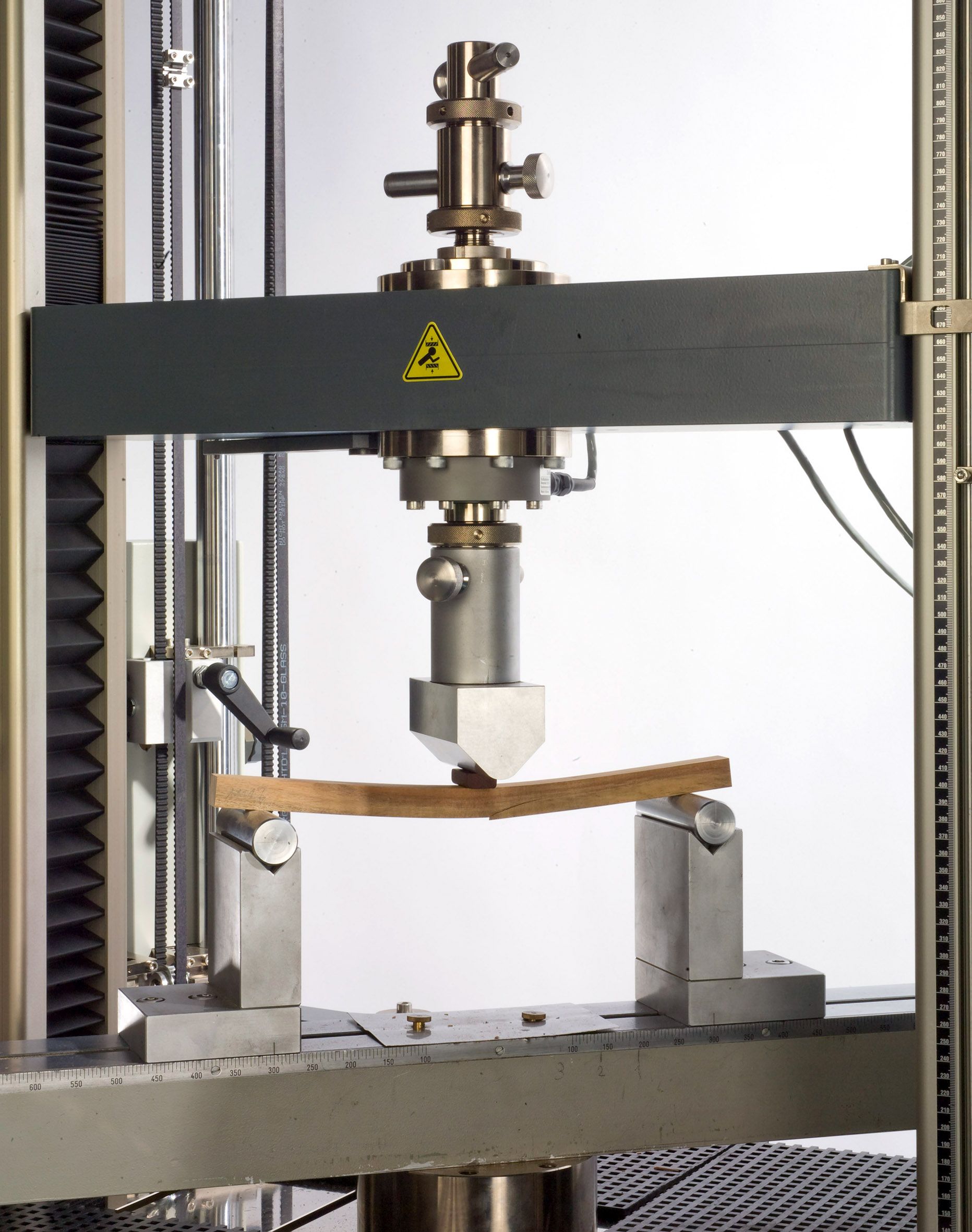Mechanics

Solid wood and wood based products are used in versatile applications, and thus must fulfill different specifications. Mechanics of materials is one of the most important and established material specifications.
Quasi-static testing:
The most prominent testing methods are the quasi static testing methods which are used to determine mechanical properties like tensile strength, flexural strength or modulus of elasticity (Young’s modulus).
Modulus vs. strength:
The modulus of elasticity (or elastic modulus) characterizes the resistance of an object or material to being deformed by a small force (stiffness). It is defined as the slope of its stress-strain curve in the linear elastic deformation region. In contrast to this non-destructive test, the strength of a material is determined by destructive test, which measures the maximum load capacity an object or material can withstand (e.g. a beam in construction).
Anisotropy:
As wood is a very complex material, it has directionally dependent mechanical properties. This so-called anisotropy means, that e.g. tensile strength of a spruce beam in axial direction is about 30 times higher than in radial or tangential direction.
Creep:
Creep (or cold flow) is the ductile manner of some solid materials to deform permanently under constant mechanical stress. Creep can occur in viscoelastic materials like wood and polymers. These materials consist of long (sometimes entangled) molecular chains, which detangle and slide under long-lasting stress.
High speed testing:
In practice, besides the above-mentioned low-strain performance of materials also their impact stress performance is important, which can be tested with tests like Charpy impact.
Cyclic or dynamic testing:
In contrast to the tests with constant loads, dynamic testing methods (fatigue tests) are used to determine the performance of parts and materials under cyclic loading. In practice, cyclic loads that cause failure of components may be relatively small when compared to loads in quasi-static tests.
Current research:
- Structural bamboo composite materials
- Material characterization of wood and fiber based composites
- Mechanical behavior of wood under different moisture conditions
- Interfacial bonding and adhesion properties between heterogeneous phases of natural fibers – polymer composites
- Characterization of composites based on TPU and wood flour
